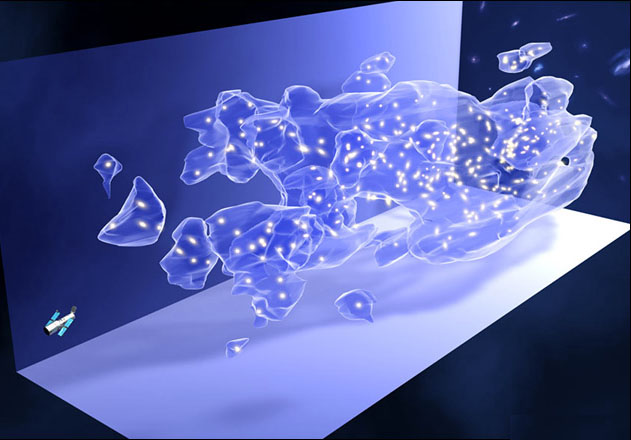 [Image: Courtesy of NASA/ESA/MASSEY, via the BBC].
[Image: Courtesy of NASA/ESA/MASSEY, via the BBC]."Astronomers have mapped the cosmic 'scaffold' of dark matter upon which stars and galaxies are assembled," the BBC reports. Producing the map "involved nearly 1,000 hours of observations with the Hubble Space Telescope." But it was time well-spent: the map now "confirms that galaxy clusters are located within clumps of this invisible material. These clumps are connected via bridges of dark matter called filaments. The clumps and filaments form a loose network – like a web."
We are thus surrounded by structures of the invisible.
In an interesting analogy, we read that "the challenge of mapping the Universe has been described as similar to mapping a city from night-time aerial snapshots showing only street lights." But now they have the actual physical layout of the streets – or something like that.
Having said all this, let me admit to an outsider's sense that either 1) the astronomers are wrong: there is no dark matter; dark matter is just a calculational artifact of the current model used to represent universal space (and, thus, this map actually shows something else); or 2) they're right about all of it – except the use of the word matter, which is referentially misleading; it is not matter at all.
(Earlier: See Filaments of space-time, where you can read about "huge arc-bubbles of light colliding with themselves in glowing, superskeletal networks, filling space like translucent caulk").
No comments:
Post a Comment